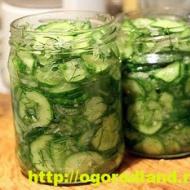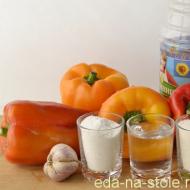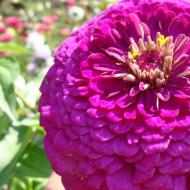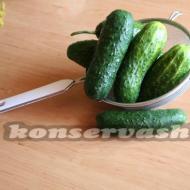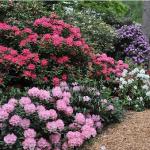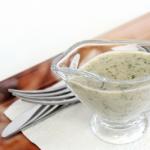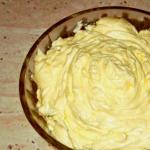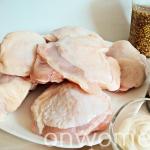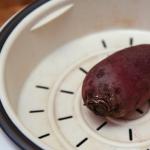
Bordeaux solution. Bordeaux mixture and features of its application at the dacha.
- It is a drug that is used against pests and many fungal diseases of plants.
This tool can be purchased at any specialty store and is considered an effective fungicide. Just as in ancient times, this tool has a wide spectrum of action.
This drug helps eliminate the following harmful plant diseases:
- Signs of scab.
- Manifestations of cluster spirosis, coccomycosis (usually after 4 treatments).
- The appearance of anthracnose on gooseberries (up to three sprays).
- The manifestation of spotting on the leaves of raspberry and strawberry.
(usually passes after two sprays).
The mixture is treated with the following cultures:
- Winter crops - from snow mold and root rot.
- Potatoes, tomatoes - from late blight.
- Melons, watermelons, cucumbers - from anthracnose.
- Beetroot.
- Onions - from rot.
- Apple and pear crops - fruit rot, spotting on the leaves, rust.
- Cherry plum, plum, cherry - coccomycosis, klyasterosporioz and others.
- For flowers and shrubs - fungal lesions.
- Grapes and currants - mildew and black rot.
- Peach - from leaf curl.
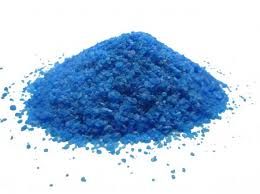
In addition, for the mixture to really help and cure plants of serious diseases, it is advisable to follow the recommendations for its use:
- Processing plants should be done in early spring, just before flowering. Be sure to pay attention to the kidneys, they should not be dissolved.
- Spraying should not be done at a high level of atmospheric humidity and at high temperatures. Otherwise it may cause leaf burns.
- It is not advisable to add carbofoss and organophosphorus compounds to the Bordeaux mixture.
- If a little late with spraying, it can be done immediately after the opening of the kidneys. But for spraying you need to use a 1% solution, a more saturated mixture can cause burning of the leaves. These treatments are most effective in controlling and preventing grape diseases.
- During irrigation, ensure that the liquid completely covers the plants. This is the only way to get visible results.
- Pay attention to the fact that even 1 solution can cause burning to especially gentle grapes, roses, berry bushes and trees. The most sensitive plants for this product are apricot and cherry. As a result of processing, the fruits are deformed and cracked. For them, it is best to use replacement-HOM, Blue Bordeaux, Kuproksat.
- It is also possible to do an eradicating spraying with 3% liquid. Usually the foliage after this treatment becomes a blue color. Usually the effect lasts about a month.
1. Dosage

Cooking Bordeaux mixture is a very crucial process, to which you need to approach very carefully. In this case, it is important to respect the dosage means. Otherwise, the wrong dose of the drug can lead to the death of all plants.
So, for 10 liters of fluid, the following dosages should be observed:
- 0.5-0.75% solution: 100 grams of copper sulfate, 75 grams of lime.
- 1% solution: 100 grams of copper sulfate and 150 grams of lime.
- 3% solution: 300 grams of copper sulfate and 450 grams of lime.
2. Calculation of consumption
It is desirable during the processing of various plants and trees to comply with the amount of solution.
For each plant it is different:
- For young trees whose age is not more than 6 years old - it will take 2 liters per tree.
- When processing fruit-bearing plants will need 10 liters.
- For shrub plants - 1.5 liters per shrub.
- With preventive measures in grapes, raspberries and strawberries - one and a half liters of solution is enough for 10 square meters.
- For processing tomatoes and cucumbers - per 10 square meters will require 2 liters of solution.
- When processing melons, watermelons, onions, beets - 1 liter of solution is required for 10 square meters.
The composition of the Bordeaux mixture
Bordeaux mixture consists of a lime mixture and copper sulfate powder. The main active ingredient of this agent is copper compounds slightly soluble in liquids, due to which long-term protection is provided.
But lime and vitriol must be mixed right before use. Usually they are packed in separate bags.
Also, do not forget that, depending on the concentration of copper and vitriol, it also changes chemical composition solution. If there is a lack of lime, it can lead to plant burns.
That is why, after the alkaline reaction test has been carried out, it should be additionally added.
Preparation of Bordeaux mixture
It should be borne in mind that the preparation of the Bordeaux mixture is quite complicated, so everything must be done correctly.
Otherwise, the solution may turn out to be too concentrated, and when spraying delicate plants it will harm them. Or vice versa of weak concentration, then it will not bring the expected effect.
So, consider the step by step preparation of a 1% solution per 10 liters:
- For dilution of the solution, you need to use any non-metallic containers.
- In warm water, 10 grams of copper sulfate should be diluted. Everything is thoroughly mixed.
- Further in this mixture it is necessary to add cold water so that the total volume was 5 liters.
- In a separate container, 120-130 grams of hydrated lime should be diluted in 1 liter of water. Everything is thoroughly stirred as a result should be a mixture of consistency, reminiscent of sour cream.
- Then it is necessary to add water to the lime mass to make the volume 5. It mixes well.
- Strain the lime mortar through gauze material. This is to ensure that the sprayer does not clog with particles of lime.
- Do not confuse what and where to pour! When stirring with a wooden stick or spatula, gently pour the bluestone into the lime mixture.
- Everything is well mixed. It is advisable to simultaneously stir the lime and pour the bluestone.
Preparation of a 3% solution is the same, only differs in concentration. This solution will require 300 grams of copper sulfate and 400 grams of hydrated lime.
Also, after preparation, it is necessary to check the acid reaction of the solution. To do this, it should lower any metal wire or nail. If, after lowering, the metal becomes red, then a little more lime should be added to the solution.
Also remember that you can not do:
- Do not pour lime mixture into the solution of copper sulfate. This will greatly reduce the quality of the solution.
- No need to mix warm and cold ingredients.
- Combine dry ingredients.
- Pour into a ready solution of water.
- Add dry bluestone in dilute lime.
Precautionary measures

During the use of this solution, be sure to observe the safety rules and precautions:
- During the preparation and spraying, you must wear gloves, a respirator, a hat and protective clothing.
- In no case, neither drink nor smoke or eat food in the intervals between sprays.
- Do not spray the mixture at close range from fruits, vegetables and berries that will be harvested within 2-3 weeks.
- Be sure to rinse fruits, vegetables, fruits, berries before use.
- No need to do processing during flowering plants.
- Processing should not be carried out with strong winds, rain and heavy dew.
- In no case do not mix it with other drugs and fungicides, it will only reduce the effectiveness of the tool.
- It is not advisable to add a soap solution to the mixture, which improves adhesion. Perhaps sticking will be good, only the solution will be ineffective.
- The last spraying should be done 2 weeks before harvest.
Surely everyone. Because country plants, like people, need not only to feed, water and nurture, but also to protect and treat. For in the vegetable kingdom is full of enemies, freeloaders and!
Bordeaux mixture - a very famous solution of copper sulphate in calcareous milk. It is used as a (chemical to combat fungal diseases of vegetables and horticultural crops). Since ancient times, copper sulphate was used by physicians as an integral part of powders and poultices, and even today it is quite possible to find medical prescriptions with its use. But the wonderful protective properties of this substance for plants, according to history, were “discovered” quite by accident.
In the notorious 5 years of the great potato famine in Ireland, when it destroyed the entire crop of potatoes in the country, a reporter for a small provincial newspaper noticed that potatoes near copper smelters are healthy and continue to grow, while in all other places it has long turned into fetid decay. Some time passed and it was already clear to everyone: the savior is copper.
Today, the copper in the Bordeaux mixture faithfully serves our gardeners and gardeners. Until plants are damaged by any diseases, treatment with this compound will be an excellent prophylactic. And with infections - medicine.
This mixture can be bought in the store in a dry form. Each package contains - and (must be!) A special indicator strip in order to verify the correctness of the manufacture of the liquid mixture.
How to prepare Bordeaux liquid
If there is no ready mix, you can cook it yourself. All you need is:- purchase components;
- keep proportions;
- strictly adhere to the cooking sequence.

Cooking proportions1% solutionbordeaux mixture:
- 10 l of the solution - 100 g of copper sulfate + 150 g of quicklime.
- 10 liters of solution - 300 g of copper sulfate + 450 g of quicklime
Despite the remarkable properties of the Bordeaux liquid - a healer of plants, we must remember: a small concentration of copper in the soil is a blessing, and an excess is a harm! Therefore, let us not forget the words of Paracelsus: “Everything is poison, and nothing is devoid of poisonousness. Only one dose makes the poison invisible "! Excess summer chemicals will certainly settle in our organisms a heavy burden of human diseases ...
Do you use bordo fluid in the country?
The article is placed in sections:
Bordeaux mixture - one of the most common fungicides to combat plant diseases. Bordeaux - is a broad-spectrum fungicide.
Active substance: Copper sulphate, at a concentration of 960 g / kg + calcium hydroxide, at a concentration of 900 g / kg.
Release form: Available drug in the form of a water-soluble 2 component powder.
Bordeaux appointment: to protect fruit, vegetables, berries, melons, citrus, ornamental, flower and other crops from a complex of diseases.
Bordeaux liquid is used to combat late blight, coccomycosis, rust, scab, curly and other plant diseases.
Bordeaux liquid helps with the main diseases of the grape: mildew, anthracnose, black rot, rubella, chilli.
Bordeaux mixture application method:
Do not confuse Bordeaux mixture and Bordeaux liquid!
For processing plants use bordeaux Blend - Bordeaux Liquidwhich can be easily cooked at home.
How to prepare a solution Bordeaux fluid:
Bordeaux mixture is a two-component drug: lime powder and copper sulfate powder. Depending on the season, 1% and 3% Bordeaux solutions are used.
 In the early spring period (before bud break) 3% concentration of Bordeaux mixture is used (300 g of copper sulphate and 400 g of lime per 10 liters of water).
In the early spring period (before bud break) 3% concentration of Bordeaux mixture is used (300 g of copper sulphate and 400 g of lime per 10 liters of water).
During the growing season (when the leaves appeared and the plants are actively growing) - prepare a 1% solution (100 g of copper sulphate and 100-150 g of lime per 10 liters of water)
Lime and copper sulphate is diluted with water in separate containers. You can take plastic buckets, glass or wooden containers.
 Metal utensils for the preparation of the solution can not be used!
Metal utensils for the preparation of the solution can not be used!
The working fluid prepared for spraying should be used immediately after preparation.
Remember: we pour the solution of copper sulphate into lime milk !!!
Preparation of 1% solution of Bordeaux liquid. Video
Take 100 g of copper sulphate and dissolved in 1 liter of warm water in a wooden or ceramic dish. When the vitriol is completely dissolved, add another 5 liters of water.
Lime-fluff in the amount of 150 g per 5 l of water is dissolved in another container, then the resulting solution of copper sulfate is poured in a thin stream into the solution of fluffed lime.
Bordeaux fluid must be filtered before use.
Preparation of 3% solution Bordeaux fluid
3% solution of Bordeaux fluid is used in the early spring period. Take 300 g of copper sulfate and dissolve in 1 liter of warm water (not higher than 50 ° C). Stir the solution until all the crystals are dissolved. Bring the solution to 9 liters with water.
In another tank 400 g of lime diluted in 1 liter of water.
Wait until the solutions become the same temperature and slowly, in a thin stream pour the solution of copper sulphate into the milk of lime (If you do the opposite, the solution will be ineffective).
Table Bordeaux application
|
Culture |
Working fluid flow rate |
Diseases |
Processing% solution interval |
Last treatment |
|
|
Apple tree, Pear, |
young trees not more than 2 liters, fruiting up to 10 liters |
scab, leaf spots, moniliosis |
15 days before harvest |
||
|
Currant Wild strawberry |
up to 1.5 l / bush up to 1l / bush up to 2 l / bush up to 2 l / 10sq.m |
anthracosis, septaria, rust, leaf spot |
before flowering 3% solution, after flowering - 1% |
1 processing with an interval of 10-15 days |
after harvest |
|
no more than 2 liters per 10 square meters |
late blight, macrospariosis, anthracnose, ascohytosis, olive spot |
processing during fruit setting, 1% at the first sign of illness |
with an interval of 10-15 days |
8 days before harvest, |
|
|
5 days before harvest |
|||||
|
Melons, |
no more than 1 l per 10 sq. m |
bacteriosis, anthracnose, peronosporosis |
at the first signs of the disease 1% |
with an interval of 10-15 days |
20 days before harvest |
|
no more than 1 l per 10 sq. m |
chalcosporosis |
15 days before harvest |
|||
Period of protective action: 7-12 days.
Impact speed: no more than 2 hours.
Compatibility with other drugs: Bordeaux mixture is compatible with most pesticides. It is well compatible with systemic fungicides: metalaxyl, oxadixyl, cymoxanil, aletam, etc., with the exception of preparations containing thiram.
Security measures:Hazard class - 2 (dangerous connection).
The border protection zone for bees is more than 2 km.
How to carry out the treatment of plants Bordeaux liquid
To carry out processing of plants should be in the evening after sunset in calm weather. When processing it is necessary to use personal protective equipment for the skin, eyes and respiratory organs.
First aid for poisoning:
- if there are signs of poisoning (unpleasant metallic and astringent taste in the mouth, irritation of the mucous membranes of the nose and throat, excessive salivation, nausea, severe chills), bring the victim to fresh air, rinse your mouth with water, change clothes, consult a doctor immediately and give recommendations for use .
- In case of contact with the skin, wash the preparation thoroughly with a stream of water; if it burns, remove lime residues with mineral or vegetable oil.
- In case of contact with eyes, rinse abundantly with water, then drip 0.5% solution of dikain, continue treatment by an ophthalmologist;
- When inhaled through the respiratory tract, remove the injured person to fresh air, rinse the mouth with water, and ensure access of fresh air;
- If it enters the gastrointestinal tract, wash the stomach with a 01% potassium permanganate solution, give the victim a saline laxative (1-2 tablespoons of magnesium sulfate), induce vomiting, and give a diuretic.
The warranty period of storage Bordeaux mixture (dry powders in bags) - 2 years.
Storage of the drug is carried out in a hermetically sealed factory container, provided with a label indicating the name of the drug and the date of its manufacture, at a temperature of -30 ° C to + 30 ° C. Do not store the drug with food. Do not store the drug in damaged packaging.
Bordeaux Fluid Video Tutorial:
Despite the fact that there are many other fungicides on sale now, Bordeaux liquid remains an indispensable assistant for gardeners and gardeners in the fight against plant diseases!
One of the main tasks faced by many gardeners and gardeners, are methods of dealing with diseases and insects that infect plants. Ready Bordeaux liquid is the most well-known drug, the treatment of which allows you to completely cope with the pests of the garden, as well as eliminate many plant diseases. The composition of this drug includes lime and copper sulfate, the miraculous properties of which were discovered quite by accident.
Bordeaux liquid is a fungicide, when properly prepared, the formation of copper sulphate occurs, which has a neutralizing effect on all harmful microorganisms. Processing plants with this drug is still in high demand among gardeners - gardeners, because it is a simple and proven tool. This fungicide is used to prepare many solutions that treat wounds in trees after trimming the crown, as well as add to whitewash. Bordeaux liquid is not only a means of combating diseases and insects, but is also a good means of prevention, helping to prevent the development of many diseases.
How to prepare the solution Bordeaux fluid
Most often gardeners - amateurs prepare a 1% solution of Bordeaux mixture, although in some cases a 3% solution of the preparation is also needed.
To obtain a 1% solution of Bordeaux liquor, you will need 10 liters of water and 100 grams of freshly quenched lime and copper sulfate. The proposed amount of copper sulfate should be dissolved in 1 liter of water, using dishes made of wood, glass or plastic. It is necessary to abandon the use of iron tanks, since their chemical reaction with the solution will occur, and it will lose its useful properties. In order for the copper sulphate to completely dissolve, it is recommended to stir the prepared solution thoroughly.
The same procedure is done with hydrated lime, that is, 100 grams of the substance is thoroughly mixed in 1 liter of water to the consistency of thick milk without lumps. In the process of preparing both solutions, when the desired consistency is reached, each of them is filled with water, and their volume is brought to 5 liters each.
The resulting liquids should be mixed between each other, pre-filtering each of them through gauze or burlap. The copper sulfate solution is added to the lime mixture, carefully stirring the resulting bordeaux liquid of light blue color.
It is not allowed to mix two solutions of high concentration followed by dilution with water, and another sequence of preparation of Bordeaux liquid is not allowed when hydrated lime, on the contrary, is poured into a container with copper sulphate.
If necessary, use a solution of high concentration resorted to the preparation of 3% of the mixture, and the formulation adheres to some changes. In order to obtain a 3% solution of the liquid, 300 grams of copper sulphate and 300-400 grams of hydrated lime are used. Further technology of preparation of 3% solution is no different from the preparation of 1%.
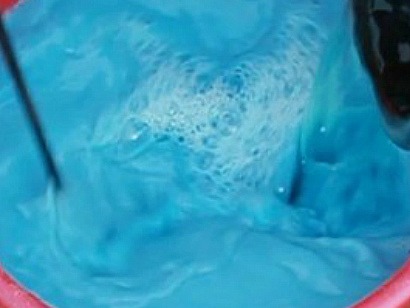
Bordeaux liquid, prepared with all the rules and recommendations, acquires a neutral or slightly alkaline reaction, which can be checked using available means. You can use the usual acid indicator, which is applied to a small amount of the drug and is determined by its reaction. In the absence of such a device, you can use an ordinary iron object on which there are no signs of rust, for example, wire or nail. The selected object is placed in the prepared Bordeaux liquid for a few minutes, after which it is carefully studied. The formation of reddish-red spots on the object indicates a violation of the preparation process and the formation of a solution of high acidity. A solution of this concentration can have a negative effect on the treated plants, cause their death or leave burns. Add lime milk to the solution will help to correct the situation, which will lead to a decrease in acidity. In Bordeaux liquid prepared without violating the technology, the iron object immersed in it should not be covered with lime.
Use the prepared mixture for processing plants preferably on the day of its preparation, and to preserve useful properties during the day it is recommended to add some sugar in it.
How to process plants Bordeaux liquid
With the beginning of spring, the country garden and the vegetable garden come to life, which is why it is during this period that gardeners - amateurs process plants. It is recommended to carry out the treatment of planting crops in the morning or evening when there is no strong wind. Spraying the liquid in the direction from the surface of the trunk to the upper sections of the crown of the tree, the solution is evenly placed on the bark of the tree, repainting it in a soft blue color. Processing of mature trees will require approximately 7 to 8 liters of Bordeaux liquid per plant, and 2 to 3 liters will be sufficient for younger plantings.
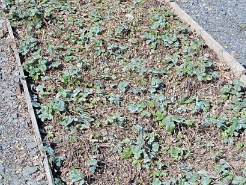
Bordeaux fluid is successfully used in the fight against scab, fungi and mold, and treating cherries and plums with it will help get rid of moniliosis and coccomycosis. A good effect is given by spraying with 1% solution of liquid of trees of pome and stone fruit trees during the growing season. A solution of this concentration is also used to treat potatoes, onions, garlic, strawberries, gooseberries, currants, raspberries and grapes.
Bordeaux liquid is allocated resistance to rain, so the optimal period for treatment is the period of the appearance of the kidneys, as well as late autumn. Spraying in rainy weather will result in burns on the leaves of plants, and may also cause foliage to fall on some types of stone trees, apples and pears. For treating the buds of trees, a 3% solution of the liquid is used, and for spraying plants after the flowering period and to prevent diseases such as late blight and powdery mildew, a 1% bordeaux mixture is used.
Do not forget that the treatment with this drug affects not only the disease, but also the plant itself. In some cases, there may be a decrease in the intensity of the growth of shoots of some plants. Bordeaux liquid is a good prophylactic agent that is used to process healthy leaves.
It is possible to process cultures with the help of a garden sprayer, and in case of its absence, an ordinary plastic bottle with a spray bottle will do.

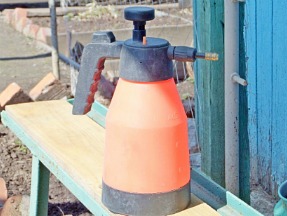
Safety when working with a solution
Of course, Bordeaux liquid brings great benefits to the garden and garden plants, but it belongs to the average level of toxicity and is poisonous to animals and people. That is why all work with this drug should be conducted in compliance with safety regulations, that is, the process of its preparation and processing should be carried out using special protective equipment: glasses, gloves, respirator and special clothing. Make the preparation of the solution should be in a special container, which later will not be used for cooking and feeding livestock.
Those plants that have been treated Bordeaux liquid, are unsuitable for feeding domestic animals. Ripe fruits that have grown on the treated crops must be washed with water before eating. The remaining solution of the drug after spraying must be buried in the ground, while it should be done at a considerable distance from the wells and sources of drinking water.
Bordeaux liquid, prepared by all the rules, is an ideal tool for the treatment of plants in the fight against various diseases and pests, as well as for preventive purposes. Compliance with the advice on its use will not only preserve the crop, but also increase its number several times.
The vitriol is a traditional remedy, without which no gardener, or the inevitable chemical "evil", has managed for centuries? Now we will understand.
Sulfuric salts are called sulfur salts with a number of metals. And not simple salts, but crystalline hydrates: each sulfate molecule is firmly connected with several water molecules. In horticulture, two types of vitriol are widely used: copper and iron - mainly to combat fungal infections. Both copper and iron suppress the vital activity of fungi, and copper also strengthens the immunity of plants.
How bad is it? Sulfuric acid residue (-SO4) and, of course, water are common compounds in nature; they do not damage human health. The active element of vitriol is a metal ion - iron or copper. They are toxic in high doses, and in small doses they are necessary for life in animals and plants. After the use of copper preparations on fruits and vegetables, its content in products is allowed (2-10 mg per 1 kg), while toxic substances after the use of other plant protection products in food should not even be in the form of traces.
But it is impossible to call a bluestone completely harmless. The effect of ferrous and copper sulfate on the environment is different: the natural content of iron in the soil is great, so its use in the garden can not disturb the natural balance, but copper over the years accumulates in the soil and changes its properties. With an excess of copper, some plants suffer from chlorosis, because iron is less absorbed, the protein content in garden products decreases, and indeed its quality.
European physicians do not exclude that some types of products grown on the site of old vineyards, where copper has been used for centuries, can be harmful to health. There is no evidence of this yet, but one thing is clear: the use of copper sulphate requires a reasonable approach.
So what to apply? It would seem that copper and iron act in a similar way, but iron is more secure, why not dwell on it? But this will not work. Copper sulfate in the form of a 1% Bordeaux liquid can be used throughout the season, but the solution of ferrous sulfate burns the leaves due to the high acidity, so it is used only in early spring before leafing and in the fall after falling leaves. Rather, these drugs alternate. If each time at the end of the season, the crowns of fruit trees and shrubs, as well as their tree trunks, are carefully treated with a solution of ferrous sulfate, then at least in these plants the spread of fungal infections is restrained; other, more toxic preparations are less often required during the growing season (by leaves) or not required at all.

One should not forget about crop rotation: cultures susceptible to fungal infections and requiring treatment with copper preparations should not be planted for several years in a row, the soil should “rest.”
Recipes
- For removal of moss and lichen from fruit trees - iron sulfate 4-6%: 500 g of vitriol is dissolved in a bucket (10 l) of water.
- For the treatment of fruit trees and shrubs from powdery mildew, blemishes, anthracnose, gray rot in the offseason - iron sulfate 3-4%: 300 g of vitriol per 10 liters of water.
- To protect plants from the complex of fungal diseases during the growing season - Bordeaux mixture 1%: Take 100 g of quicklime and quench it in a small amount of water, dilute with water to a volume of 5 liters, get milk of lime. In another container (non-metallic), 100 g of copper sulfate is dissolved in hot water and also diluted to 5 liters of water. Then a solution of copper sulphate is poured into the milk of lime, stirring constantly. Be sure to pour the solution of vitriol into lime, and not vice versa! The drug can not be stored for more than 5 hours: lime particles in stale Bordeaux liquid stick together and clog the sprayer.
supersadovnik.ru
Remedies for pests of gardens and gardens
Tobacco dust
Waste tobacco factories, containing from 0.5 to 1% nicotine. Tobacco infusion and decoction in contact with aphids and various young caterpillars kill them. To tobacco infusion and decoction better stick to the plants, it is recommended to add 0.4% soap (4 g per liter of liquid), while the soap is first dissolved, heating in a small amount of infusion or decoction.
For the preparation of tobacco infusion take 1 kg of tobacco dust and insist for two days in 10 liters of water. Then the infusion is filtered and diluted with water in 2-2.5 times.
To prepare tobacco broth, 1 kg of tobacco dust is boiled in 10 liters of water for 30 minutes. Then leave for a day for cooling and infusion, filter and dilute with water up to 2-2.5 times.
Bordeaux liquid
It is used in the form of a 1-percent solution (100 g per 10 liters of water) to combat scab, anthracnose, rust and other fungal diseases. Processing of the gardens is stopped 15 days before harvest. Prepare immediately before use in wooden, earthenware or other non-metallic utensils. 100 g of copper sulphate is dissolved in 5 liters of preferably hot water. Then the solution is cooled. Separately, quench 100 g of quicklime in a small amount of water, the solution is made up with water to 5 liters. The resulting milk of lime is filtered through cheesecloth and mixed with copper sulfate solution. Properly prepared liquid must have a sky blue color, a neutral or slightly alkaline reaction. Determine it with litmus paper. If it turns blue, it means that the liquid is prepared correctly. Instead of a litmus test, you can dip some metallic object (knife or nail) into the liquid. If it forms a red patina of copper, indicating the incomplete effect of the vitriol with lime, add a little more lime and add lime to the Bordeaux liquid, stirring it carefully.
Bordeaux liquid in its pure form is used against fungal diseases, and in a mixture with anabazine sulfate - against diseases and sucking pests. 15-20 g of anabasin sulfate diluted in 10 liters of Bordeaux mixture.
inkstone
4-5% solution (400-500 g of iron vitriol per 10 liters of water) is used for spraying in late autumn or early spring (before bud break) against moss, lichen, leaf curl, American gooseberry powdery mildew and other fungal diseases.
In addition, a 10–15 percent solution of ferrous sulfate can be used to control slugs by spraying the soil. Iron sulfate consists of green crystals that dissolve well in water. Oxidized in air, acquires a yellow-brown color.
Slaked Lime (Fluff)
For making lime milk, take 2-3 kg of quicklime in a bucket of water. In order to avoid burns of the bark, lime is quenched at least 2-4 hours before the preparation of milk of lime. To do this, pieces of quicklime are put in a tight box, a wooden barrel or an earthenware (but not metal) dish and a little water is poured in to prevent its excess. At the beginning of quenching, warm or even hot water is used. When wetted, good lime is heated, breaks up into parts and, upon further addition of water, forms a powder (powdered lime). When water is added to this powder, a thick mass is obtained.
Quicklime should be kept in airtight and moisture-proof containers (boxes or barrels) with tightly closed lids.
Slaked lime, if it is available in small quantities, is stored as a thick creamy mass in wooden boxes deeply dug into the ground, tightly closed and covered with a thick layer of earth.
For better adherence to plants, 2 kg of clay, flour paste or joiner's glue are added to a bucket of milk of lime (25-50 g each).
Soda ash or clothes soda (sodium carbonate)
It is used against the American mealy, dew in the form of a 0.4-0.5 percent solution (40-50 g of soda per 10 liters of water). To improve adherence, sugar, molasses (1-2 tablespoons per bucket of solution) or soap (40 g) are added to the solution.
Even in high concentrations, the use of soda does not cause plant burns. Soda can be sprayed and berries, and plants without danger of ruining the crop.
Green soap concentrate
They are used against eggs of aphids, scythes, squirrels, larvae of shields, caterpillars of the apple moth, and also against scab and for the destruction of mosses and lichens in 4-8 percent concentration (400-800 g per 10 liters of water).
Copper sulfate
The blue crystals dissolve well in water, especially warm. 1% solution (100 g per 10 l of water) of copper sulphate is used in early spring against causative agents of fungal diseases. 0.5% solution (50 g per 10 l of water) can be used for prophylactic spraying of potato and tomato haulm against phytophthora.
Phosphamide (Rogor)
40% emulsion concentrate. A yellowish brown liquid with an unpleasant odor. Effective against ticks, caterpillars, moths and aphids at a concentration of 0.1-0.2%. It has a long lasting effect. It can not be mixed with alkaline preparations.
Read more articles on this topic here.
honeygarden.ru
How to treat the cellar of mold with their own hands
- How to process the cellar
- Tips to help
The cellar is very important for housekeeping. With its help, it is possible to save a lot of vegetables and preparations for the winter. And how it becomes unpleasant when you find mold in this room, which destroys everything in its path.
Growth of mold fungi.
Its appearance is often due to insufficient ventilation or its complete absence. Also important is the low occurrence of groundwater. Therefore, you first need to solve these problems first, and then treat the cellar from the mold for the storage of various blanks.
What begins self-treatment cellar
First of all, the room must be freed from all winter blanks, old sand, structures (wooden shelves, partitions). The room should be empty. The doors of the basement are left open for airing and complete drying.
All shelves and partitions must be washed with soapy water and left to dry in the sun for 7 days.
The solution to the problem with mold.
If there are objects affected by mold among the extracted elements, it is removed by firing with a blowtorch or cleaned with a knife from the surface. The cleaned place is covered with copper sulfate in several layers (each layer is applied after the previous one dries). The best option would be to replace the affected board with a new one.
All material (new and old) after drying is treated with a solution of the following ingredients:
- slaked lime;
- copper sulfate.
To prepare the solution in one container, dilute 100 g of vitriol with water, and in the other 1 kg of lime. Lime is gradually poured into the diluted vitriol. While mixing the two ingredients, the mixture is constantly stirred. The finished solution is smeared with a brush all wooden elements.
Back to table of contents
How to process the cellar
When the basement is dry, you need to examine it. If mold is found on the walls or ceiling, it is necessary to get rid of it. In these places, the cellar is treated with a blowtorch or copper sulphate. The affected areas are smeared with vitriol several times. Wait for the first layer to dry, and then apply the next one.
Fungal rot causes rot on wooden surfaces.
Preparing the room for the final stage, you can process the cellar in the following ways:
- A mixture of copper sulphate and lime, which were processed boards. Take a brush and promegrate it all the room. Apply the second layer after drying first.
- A mixture of slaked lime and bleach. The ingredients are taken in equal parts and diluted in a small amount of liquid. The resulting mixture smears all surfaces.
- A mixture of salt and boric acid. Take 50 g of acid and 950 g of salt. The ingredients are diluted with boiling water. Water will need 5 liters. All affected areas are treated with a solution, the cracks are small and deep, at least 5 times.
- For this option you need to prepare:
- Capacity of ceramic or metal.
- Sulfur pieces (need 40 g per 1 m³).
- Material for sealing all openings in the room.
- Quicklime.
http://youtu.be/-ec7-Yx8Mcc
All openings through which air enters the cellar must be carefully repaired. Put the sulfur in the container and light it. Get out of the room quickly to avoid exposure to poisonous gas. Close the door tightly. In the process of burning sulfur emits gas that can destroy the mold.
Leave the basement closed for approximately 10 hours. Then open it for airing and drying. To make the drying process faster, quicklime can be placed here, which will serve as a sponge for absorbing moisture.
Back to table of contents
In order to protect yourself from new manifestations of mold, do not take the time and effort and follow these recommendations:
- Process the ground cellar copper sulphate. Dissolve it in water, pour it on the surface and let it soak.
- Pour lime over a surface of a few millimeters of lime.
- Place the storage of vegetables, fill with sand mixed with lime. Thickness of a layer is 1 cm.
- Arrange around the perimeter of the room boxes with lime.
Using lime will reduce the level of humidity in the room. Consequently, the likelihood of such a harmful phenomenon as mold will decrease.
These simple methods can be processed from the cellar mold. It is advisable to engage in this procedure in the middle or end of summer, so that the crop will get into a clean storage.
MoiPodval.ru
Bordeaux liquid, how to properly prepare and apply expert advice
Ostroumova, Moscow: "I have worked at the Klinsky state farm near Moscow for many years and have my own garden plot. In gardens before blooming buds, we successfully used 3% bordeaux liquid against scab and blotch, 1% liquid before blooming, and after flowering we tried to do without copper-containing preparations, from which pears and apples were covered with a brown mesh and cracked, were not yet having time to get sick.But in modern literature it is often recommended use bordeaux fluid not only against diseases, but also against pests (0.1-0.3%). But such treatments are completely ineffective, as the solution concentration is too low. How to properly prepare and apply Bordeaux liquid, so as not to destroy the gardens, berries and flowers on our sites? "
What is Bordeaux liquid, where Bordeaux liquid is used
Bordeaux liquid, as it is known, is a mixture of a solution of copper sulphate (copper sulfate) and milk of lime. It is widely used in the fight against fungal diseases of apple and pear (scab, fruit rot, leaf spot, rust), cherries, plums, cherry plum (gray rot, monilial burn, coccomicosis, blast disease) and diseases of berry bushes, grapes and roses (anthracnose, septoriosis, mildew, stem cancer, infectious burn).The best results are achieved when spraying plants before or at the beginning of bud break and before flowering.
It is impossible to carry out processing at high humidity and air temperature.to avoid burns on the leaves.
You can not also dilute the finished Bordeaux liquid with water., since it is stratified in this case, and mixed with organophosphorus preparations, karbofos, etc. for pest control.
Bordeaux liquid is available in retail in bags: 300 g of copper sulphate and 400 g of lime - for early spraying ("blue") - 3% concentration, as well as sachets of 100 g of copper sulphate and lime for 1% concentration.
In the bags must always put a litmus test to determine the acidity of the solution. To prepare Bordeaux liquid, mix the solution of copper sulphate and lime. Copper acts as a poison, lime is introduced for neutralization. The mixture should be used on the day of preparation.
Preparation of Bordeaux garden processing liquid, spraying
For the preparation of "blue" spraying take vitriol (300 g) and lime (300-400 g), separately diluted in 2-3 liters of hot water in a wooden, enameled, glass, plastic container (but not aluminum), then brought up to 5 liters with cold water and trickled in solution of copper sulphate in the filtered lime solution. It turns out 10 liters of solution.The mixture should have a beautiful sky blue color and not contain excess copper.What is the litmus test used for? If it is yellow, it should be painted blue, not red.
If a clean nail dipped into the solution turns redThis means that there is an excess of copper in the liquid, which is removed with a solution of lime.
Irina Mescheryakova, Candidate of Agricultural Sciences of science


